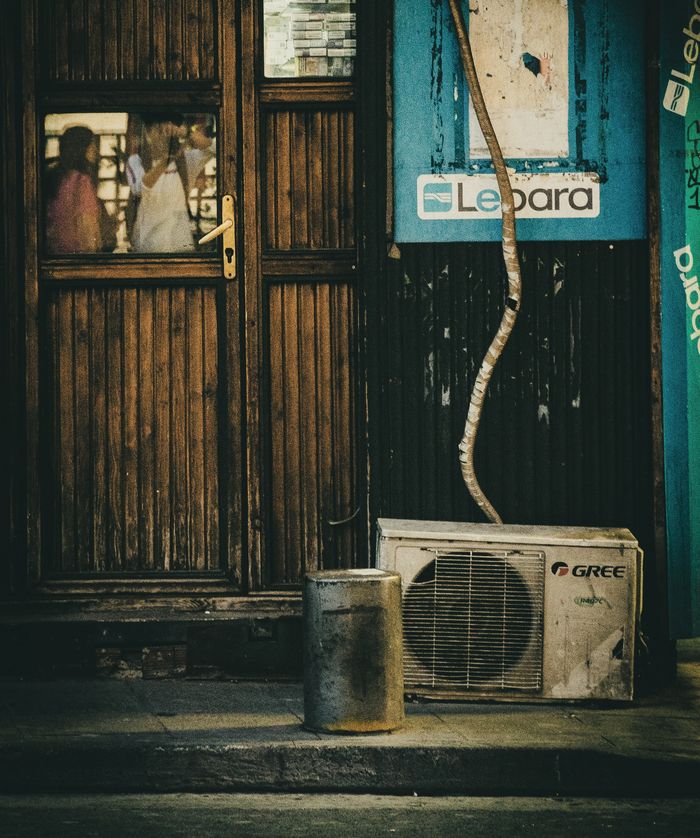Air-conditioners are a typical ‘false solution’ when it comes to adaptation to climate change. They cause harmful greenhouse gas emissions and use a lot of energy. During extreme heat waves, like the one in India this year, the power system can become overloaded. Given the rapidly increasing global demand for space cooling, passive cooling solutions offer alternatives – also in tourism.
Air-conditioners and fans running at full speed may have far-reaching consequences for energy infrastructure and the security of energy supplies. This year, a major heat wave in India, with record temperatures not seen for more than a century, led to an overload of energy systems and to power cuts. Air-conditioners consume a lot of power, 70 percent of which India generates from coal. During the heat wave, power plants were short of supplies.
While air-conditioners seem to be an adaptation measures relatively easy to implement, they are not a good solution in situations of energy scarcity. In addition, in the attempt to address the adverse impacts of climate change they also accelerate global warming.
Power generation from coal is particularly damaging to the climate. Apart from the consumption of electricity, the wide-spread use of halogenated refrigerants in air-conditioners is also highly problematic. The global warming effect of such fluorinated greenhouse gases is several hundred to several thousand times stronger than the impact of CO2.
Tourism leading on a wrong path
In the United States, Japan, South Korea, and China air-conditioners have become common in private households. In many other countries the hotel sector has been one of the pioneers in spreading this problematic technology, as comfortable temperatures are a decisive factor for customer satisfaction.
In countries like India, where so far only eight percent of households currently have room air conditioners, they have long been common in the hotel sector. Even in smaller properties they are becoming part of the standard. Private households are catching up. According to estimates in the India Cooling Action Plan (ICAP), the demand in Indian households is set to grow 11-fold by 2037.
Efficiency gains, but rebound effects
The International Energy Agency expects an enormous increase – worldwide demand may triple by 2050. The number of air-conditioners installed in buildings might rise from 1.6 billion to 5.6 billion. The use of air-conditioners and fans for room cooling already accounts for about ten percent of global consumption of energy. Trend: upwards, and rapidly so. According to data by the Economist Intelligence Unit, this applies especially to commercial users like data centres and the hotel sector.
By using highly efficient components and systems energy consumption can be reduced significantly, and so can CO2 emissions. However, increases in efficiency also entail the danger to lead to higher demand, for example when air-conditioners are used more extensively. So it is all the more important to replace today’s common HFC cooling agents and use halogen-free, natural refrigerants to considerably reduce direct greenhouse gas emissions.
Passive Cooling
Air-conditioners, however, are not unavoidable. Priority should be given to climate-friendly passive cooling measures which are in the focus of space cooling research, alongside improvements in energy efficiency. Passive cooling includes using building materials with better heat insulation properties, better insulation for example by greening facades and roofs, shading, heat-reflective windows, climate efficient building alignments and architectural design that supports natural ventilation.
Some hospitality businesses use a combination of both natural and mechanical systems, with mechanical systems only used when necessary. This “mixed mode” makes them more adaptable and helps them cut down on energy costs and emissions. Even simple measures such as equipping hotel rooms with shutters, roller blinds, sun-blinds or curtains and respective guidance for housekeeping staff offers major potential for savings.
Investing in smart energy management systems might also be an option that may pay off. Such systems are based on machine-learning and diverse data sets such as thermodynamics, weather and demand patterns.
Learning from the past
Human beings, flora and fauna will need to adapt on the long run to both increasing average temperatures and more extreme heat. In hot regions of the world, traditional architecture and urban planning used to be adapted to the climate conditions. This traditional knowledge can today offer solutions to other regions which so far hardly had to deal with extreme heat, but will not be spared in the future. Such solutions include traditional mudbrick buildings which can today be combined with modern technology and amenities. Accommodation built in a climate-friendly manner and in traditional style does not just mean comfort for the guests, but also offers a special ambience.
Climate-friendly solutions in tourism as an opportunity
Tourist destinations and the hospitality sector are in a fortunate position, as with low-energy, climate-friendly cooling solutions they are able to generate significant additional benefits in relation to biodiversity, cityscapes, and air pollution control. This not only ensures that they remain attractive to both local people and guests, but may even considerably increase their attractiveness. A stronger focus on gardens, parks and plants on the roadsides will help as well as less soil sealing. Where concepts to green facades as natural eye-catchers in combination with different creative designs are used in entire streets or neighbourhoods, destinations even benefit from new tourist attractions.



